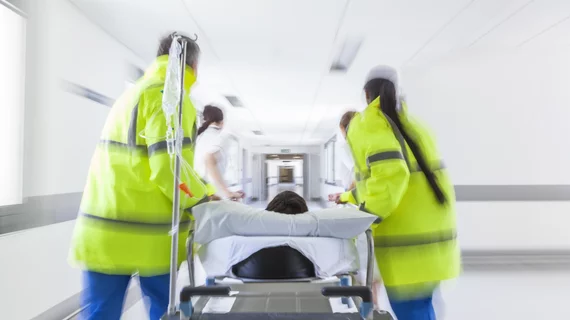PAD patients face greater risk of death, complications after a heart attack
Patients with peripheral artery disease (PAD) face an increased risk of death when hospitalized for a heart attack or unstable angina, according to new findings published in the American Journal of Cardiology.[1]
The study’s author’s explored data from nearly 4 million hospitalizations from 2016 to 2020. All patients presented with ST-elevation myocardial infarction (STEMI), non ST-elevation myocardial infraction (NSTEMI) or unstable angina. Data was taken from the Nationwide Readmissions Database.
Patients were divided into three groups based on the presence and severity of PAD. One group included those with no signs of PAD, a second group included patients with PAD and a third group included patients with severe PAD that was defined as critical limb ischemia.
Overall, 6.4% of patients had PAD when they presented for an acute coronary syndrome (ACS). Just 0.2% of patients had CLI. All other patients were free of PAD and CLI at the time of their hospitalization.
Patients with PAD were generally older (a mean age of 72 years old vs. 67 years old) and slightly more likely to be female than patients without PAD. They were also more likely to present with end-stage renal disease, congestive heart failure, weight loss and liver disease. Researchers also compared the PAD group with the CLI group, noting that CLI patients were younger (a mean age of 69 years old vs. 72 years old) and more likely to present with end-stage renal disease, congestive heart failure, diabetes, weight loss or liver disease.
After making certain adjustments, in-hospital mortality was 24% higher for PAD patients and 86% higher for CLI patients compared to non-PAD patients. In addition, cardiogenic shock, mechanical circulatory support, cardiac arrest and acute kidney injury were all more common among PAD/CLI patients than non-PAD patients.
“These findings underscore the importance of PAD as a risk factor for not only the development of coronary atherosclerotic disease, but for inferior acute outcomes when presenting with ACS,” wrote first author Nameer Ascandar, MD, MPH, with the Cardiovascular Outcomes Research Laboratories at UCLA, and colleagues.
The group also noted that, as one might expect, healthcare costs increased when patients presented with PAD or CLI.
“We found that patients with PAD had higher hospitalization costs by $1,400 while those with CLI had an increase by $24,700, compared to non-PAD,” the authors wrote. “These findings may be attributed to longer duration of hospital stay, greater disease burden, and/or higher level of care needed to manage cases of concomitant PAD.”
Perhaps the biggest takeaway from the team’s analysis is that PAD patients who face a heightened risk of ACS may require early attention to help reduce their risk of experiencing a STEMI, NSTEMI or even being hospitalized for unstable angina.
“Early intervention aimed towards reducing atherosclerotic risk factors in patients with both PAD and coronary artery disease is imperative to improving clinical outcomes in this cohort,” the authors wrote. “This observational study demonstrating the association between ACS mortality and PAD severity may aid in discussions of prognosis for patients afflicted with this acute event.”
Click here to read the full study.

